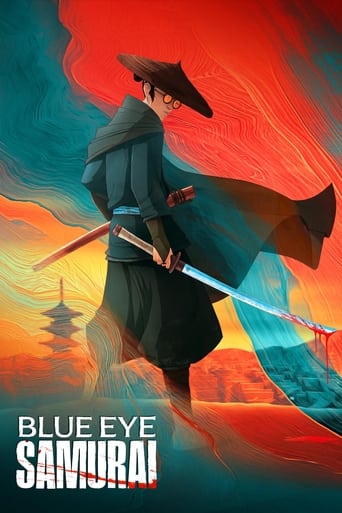Best movies & TV Shows like Izumo no Okuni
A unique, carefully handpicked, selection of the best movies like Izumo no Okuni Starring Rei Kikukawa, Yukari Onoe, Masato Sakai, Junkichi Orimoto, and more. If you liked Izumo no Okuni then you may also like: Gate of Hell, The Song of Bernadette, Inu-Oh, Samurai Hustle, The Golden Mistress and many more popular movies featured on this list. You can further filter the list even more or get a random selection from the list of similar movies, to make your selection even easier.
Izumo no Okuni was born about 1571. This time period in Japanese history was fraught with struggle. It was known as the Period of Warring States, that is, the land barrons (daimyo) fought against one another for power. Her father was a blacksmith for the Izumo Grand Shrine and, consequently, the family served as well. It was a custom to send priests and young women, such as Buddhist nuns, among others to solicit contributions. Izumo was sent to Kyoto to perform sacred dances and songs. Her Okuni Kabuki was known and applauded throughout the land. After 25 years she retired.
You may filter the list of movies on this page for a more refined, personalized selection of movies.
Still not sure what to watch click the recommend buttun below to get a movie recommendation selected from all the movies on this list
The Song of Bernadette
In 1858 Lourdes, France, Bernadette, an adolescent peasant girl, has a vision of "a beautiful lady" in the city dump. She never claims it to be anything other than this, but the townspeople all assume it to be the Virgin Mary. The pompous government officials think she is nuts, and do their best to suppress the girl and her followers, and the church wants nothing to do with the whole matter. But as Bernadette attracts wider and wider attention, the phenomenon overtakes everyone in the the town, and transforms their lives.
Inu-Oh
Born to an esteemed family, Inu-oh is afflicted with an ancient curse that has left him on the margins of society. When he meets the blind musician Tomona, a young biwa priest haunted by his past, Inu-oh discovers a captivating ability to dance. The pair quickly become business partners and inseparable friends as crowds flock to their electric, larger-than-life concerts. But when those in power threaten to break up the band, Inu-oh and Tomona must dance and sing to uncover the truth behind their creative gifts.
Samurai Hustle
During the reign of the eighth shogun of the Tokugawa shogunate, the Yunagaya Domain in the Tohoku region is a small han. But at the han, there is a gold mine. Suddenly, Masaatsu Naito of Yunagaya Domain receives an order to perform Sankin-kotai within 5 days. Sankin-kotai is a custom that requires the daimyo to visit the shogun in Edo. Unfortunately, the time needed to visit the shogun in Edo for Masaatsu Naito is 8 days. Masaatsu Naito also learns he received the order because a high ranking government official wants the gold mine. Also, the expense for Sankin-kotai is high and the Yunagaya Domain is such a small han that it seems impossible to complete. Nevertheless, Masaatsu Naito begins an unexpected operation to complete Sankin-kotai in 5 days.
The Golden Mistress
Ann Dexter, daughter of an itinerant Haiti waterfront character, Carl Dexter, brings a golden idol, which her father her stolen at a voodoo ceremony, to Bill Buchanan, who is known along the waterfront as a man eternally on a treasure hunt. He agrees to let Ann accompany him in search of the treasure after a native he befriended gives him directions and certain voodoo secret charms. They follow an underwater passage to an island where they find a Pagan tribe. They learn that the golden idol is a burial symbol representing the dead and that hundreds of idols are at the bottom of the sacred burial lake.
Kyoto, My Mother's Place
Story of Kyoto: its history, culture, as well as the role it has played in the director's life and the life of his mother.
Mumon: The Land of Stealth
Raised suckling poison arrows among the sparring Iga ninja factions, Mumon is a carefree 16th-century mercenary. When the ninja council makes a power play to defeat the young Nobukatsu Oda struggling to step into his father’s warlord shoes as they expand rule across the country, Mumon jumps into the fray to satisfy his new bride Okuni’s demand that he make good on his promises of wealth. Yet Mumon soon finds what is worth fighting for beyond money or nation.
Sword of Desperation
A talented but troubled Edo Period swordsman, Kanemi Sanzaemon. Three years earlier, Kanemi killed a woman, Renko, the corrupt mistress of the powerful daimyo Tabu Ukyou. Unexpectedly, Kanemi received a lenient sentence for his crime and is allowed to return to his clan after only one year of imprisonment. Following his return, Kanemi is faced with the death of his wife, Mutsue. Thereafter, Kanemi lives with and cares for his wife's niece, Satoo, who has secret affections for Kanemi and expresses them by helping change his bleak outlook on life. Meanwhile, Kanemi's develops his unique "bird-catching" sword technique which he will soon put to test in battle for the first time against the fearsome swordsman, Hayatonosho Obiya.
Ashura
Adapted from the successful play, the film takes place in 19th-century Japan, where a war between demons and their slayers is fought. Izumo, a kabuki actor with a demon-slaying past, meets and falls in love with Tsubaki. However, something is not right, as mysterious marks appear on her body as time progresses. At the same time, it is announced that Ashura, the queen of all demons, will be resurrected and bring destruction to the universe.
Nezumi Kozo Jirokichi
Nezumi Kozō is the nickname of Nakamura Jirokichi, a Japanese thief and folk hero who lived in Edo during the Edo period. His exploits have been commemorated in kabuki theatre, folk songs, jidaigeki, and modern pop culture.
Child of Kamiari Month
A year after losing her mother, a young girl learns that she must journey across Japan to the annual gathering of gods in the sacred land of Izumo.
Hakuouki: Wild Dance of Kyoto
There's a war going on in ancient Kyoto. A war fought in shadows, between the forces of the Shogunate's armed enforcers, the Shinsengumi, and the vampire-like Ronin warriors known as the Rasetsu or Furies. And trapped in the middle is a young woman disguised as a man. Seeking her missing father, Chizuru Yukimura comes to Kyoto only to find her fate forever intertwined with the destinies of Shinsengumi Vice commander Toshizo Hijikata and his elite force of swordsmen. Because Chizuru's father has created a secret elixir that enhances the user's strength, speed and healing, and the furies will do anything and kill anyone in order to control that power!
Zen
In the early 1200s, Dogen brought Chinese Zen philosophy to Japan, and established the Japanese Zen school of Buddhism. He taught that a person was capable of realizing Buddhahood within himself, by way of Zazen. Zazen is extended hours of sitting and meditating to achieve a state of “Mu” (nothingness, or empty existence).
Baragaki: Unbroken Samurai
Set in the 19th century, "Moeyo Ken" follows the life of Toshizo Hijikata. He was the vice-commander of the Shinsengumi and fought against the Meiji Restoration.
Two Portraits of MIYAGINO
In Edo-era Japan, a ukiyo-e artist languishes in his master’s shadow. Creatively stifled, he finds consolation in the company of a prostitute, and becomes entangled in a love triangle. A mystery emerges involving two portraits and the sudden disappearance of the artist Sharaku. Helmed by Cannes-selected director Tatsuji Yamazaki, the film employs kabuki-inspired sequences and stylised sets.
Samurai Shifters
Shunnosuke Katagiri is a samurai and a bookworm. He receives a mission to help a daimyo move. With the assistance of Genemon Takamura and Oran, Shunnosuke Katagiri carries out his mission.
Lucky Adventurer Nobunaga Oda
Oda Nobunaga (1534–1582) was a major daimyo during the Warring State period of Japanese history. He was the second son of Oda Nobuhide, a deputy military governor with land holdings in Owari province. Nobunaga lived a life of continuous military conquest, eventually conquering a third of Japanese daimyo before his death in 1582. Telling the story of his rise to prominence as he leads an army of 4,000 men against the 40,000 troops of Lord Imagawa Yoshimoto to prevent the arrogant daimyo from crushing the Oda clan and taking control of the entire nation. From a newly restored anamorpic widescreen print, this is the ultimate warlord movie.
Love's Twisting Path
Set in Kyoto in the last days of the Edo Period, the bloody conflict continues between local feudal domains, which aim to overthrow the Tokugawa Shogunate, and the Shogun's police and city patrol. Tajuro Kiyokawa, once the master of the sword but now a depraved samurai who left his domain putting aside his past ambition, barely makes ends meet. Toyo, a woman who runs a tavern next door, feels affection for Tajuro who guards her place against nasty customers, but he never realizes Toyo's feelings.
Asura
A recording of the 2003 production of the 1987 play. An evil nun known as Bizan wishes to bring back to life the demon monarch Ashura, so that the oni may rule the world. But that’s not an easy task with the Demon Wardens scouring the land and taking care of demons who have taken on human form. Five years ago, Wakuraba Izumo served as a Demon Warden lieutenant alongside his chief, Kuninari and the slightly mental Abe Jaku. Since then he’s retired and has been enjoying success as a lead actor for the Nakamura Kabuki troupe, led by playwright Nanboku Tsuruya IV, while his former colleagues continue to fight the good fight. Meanwhile the police authorities have been struggling to capture the thief known as “The Night Camellia.
Legends of the Hidden Temple
In a Temple filled with lost treasures and protected by mysterious Mayan temple guards, six teams of two children compete to retrieve one of the historical artifacts in the Temple by performing physical stunts and answering questions based on history, mythology, and geography. After three elimination rounds, only one team remains, who then earns the right to go through the Temple to retrieve the artifact within three minutes and win a grand prize.
Yoshitsune
Yoshitsune is a Japanese television drama series originally broadcast between 9 January and 11 December 2005, with a three-part special compilation being aired from 24 December to 25 December 2005. The 44th Taiga Drama, the original work is by Miyao Tomiko, screenplay by Kaneko Narito and starring Hideaki Takizawa.
The Sacred Blacksmith
Cecily's a blushing knight in shining armor. Unfortunately, it seems most battles end with her as the damsel in distress. Her lack of skill and distaste for violence make her an unlikely heroine - until the brooding blacksmith Luke comes to her aid, using his powerful magic to forge blades of supernatural strength. Cecily wields this sacred steel and charges forth to face a dangerous new threat. A cloaked fiend is unleashing demons upon the land, and though he lurks in shadows, the villain is much closer than Cecily can imagine.
The Yagyu Conspiracy
It takes place at the time of the Shogunate rule with Shogun Hidetada and who will succeed Hidetada. A struggle for power between the family and the daimyos. Historically the Yagyu's have always been close to the Shogunate, and helped...
Legendary Swordfights of Yagyu Jubei
A story of Yagyu Jubei, master swordsman from the well-known Yagyu-Shinkage school in the Edo period. Even decades after the establishment of the Tokugawa shogunate, many were framing plots to topple Tokugawa's political system. The master of Yagyu-Shinkage school, Yagyu Munemori who serves the third Tokugawa shogun Iemitsu is commissioned to keep an eye on Daimyo lords all around Japan. Munemori's eldest son, Jubei starts a stealthy trip to fight against those who engage in secret maneuvers. Enjoy sword fighting actions between Jubei and his rivals.
Tsukahara Bokuden
Takahara is a legendary figure in the Warring States Period of Japan. He was born in Kagoshima, the sacred place of sword. He learned the art of Taidao in Kagoshima from childhood. He had faced many life-and-death battles in his life, but he had never been injured at one time. In this new play, the story will be unfolded centering on the youth period of Sakahara, which has never been shown on the big screen before.
Sanadamaru
Spanning over 50 episodes, we follow the historical fiction of the Sanada clansmen as they plotted and fought their ways to survive the changing political alliances during the Warring States Period of Japan.
Hana no Ran
The story takes place during the Muromachi period of Ancient Japan, in the midst of the Ōnin War. The main character in the series is Tomiko Hino, a historical figure with a bad reputation because of her actions to rebuild Kyoto after the Ōnin War.
Matoi the Sacred Slayer
Matoi Sumeragi wishes for nothing more than to lead a normal life away from the spotlight. She is quite satisfied alternating between school and her part-time job at her best friend Yuma Kusanagi's family shrine. But this routine life is permanently disturbed when a Night—an evil extra-dimensional entity—attacks the shrine. Matoi is able to drive it off after unwittingly calling upon the powers of a god, the natural enemies of the Nights. Matoi and Yuma are soon joined by Claris Tonitolus, an experienced exorcist from the Vatican, and agent Haruka Luciela, who works for the secretive Night defense organization IATO. Despite not knowing the perpetrator behind these attacks nor their motive, Matoi must come to master this newfound power in order to protect both the people around her and the once normal life she holds so dear.
Bakumatsu
Kyoto, Japan. The heroine meets a man who gives her a pocket watch somehow leading to a Torii in a shrine, and suddenly it warps her into the Bakumatsu period. In the world of where there is such a difference in importance of value, she tries to find a way to go back. When she meets a man who has crossed time and says, "I will live for you," a love story between the two blossoms.
Izumo
A historical fantasy set in third century (i.e., mythical) Japan. It tells the story of Izumo, the young prince of Nakatsukuni. He's not very interested in studying, unlike his cousin Dekiru; instead, he wants to see the wider world. One day, a mysterious girl named Sanae shows up as a stowaway on an airship. Although nominally from Yamataikoku, she is actually from the Naga, a shadowy people possessing magical powers. Sanae is kidnapped by Takeru, a warrior from the rival kingdom of Akusa, and placed at the mercy of the evil witch Yomihime. Izumo, helped by an orphaned glider pilot named Navi, must now take up the sacred sword of his country, master its powers, and rescue Sanae. However, before that, he must defeat the reawakened eight-headed snake of legend, Yamata-no-Orochi.
Revenger
As master assassin Usui Yuen looks into a series of assassinations made on the grand samurai clan, the Satsuma, he encounters Kurima Raizo, member and survivor of one of the attacks. Together, they discover the true nature of these murders is bigger than over stolen resources. As they get closer to the truth, will they come out alive to exact revenge?
Takeda Shingen
During the 16th Century Japan was involved in the Sengoku Period, an era of Civil Wars and the powerful Warlords who fought them. One of the earliest and strongest of these men was the Great Lord TAKEDA Shingen. A tremendous military genius, his battles are the stuff of legend.
Shin Heike Monogatari
Set at the end of the 12th century when several wars for control of Japan disrupted a long era of peace, this tale of "Heike" (another name for the Taira clan) focuses on Taira Kiyomori who fights alongside other members of his clan to at first successfully overcome the Minamoto clan and their bid for power. Battles and intrigue abound, as the puppet Emperor and Buddhist monks take sides in the power struggle. At issue is Kiyomori's parentage, not an unusual problem for the nobility in that era where clandestine liaisons among courtiers and the upper classes were common.
Hip-Hop and the White House
Unveils the transformative fifty-year history of a world-changing culture, illustrating hip-hop's journey from outsider status to the pinnacle of power. This documentary showcases the pivotal contributions of artists who created some of the most powerful political songs of all time and explores the experiences of rappers who interacted with presidents and performed inside the world's most famous residence. Starting from the blighted neighborhoods that created the culture as a result of oppressive presidential policies, this film describes the complex web of influence, culture and celebrity that is now a permanent feature of American politics.















































Gate of Hell
Japan, 1159. Moritō, a brave samurai, performs a heroic act by rescuing the lovely Kesa during a violent uprising. Moritō falls in love with her, but becomes distraught when he finds out that she is married.